Etosha National Park Namibia is the most significant wild reserve. This paradise for nature and wildlife lovers covers an area of 22,935 square km and houses multiple ecosystems with breathtaking landscapes, incorporating a vast array of wildlife, including the “Big Five” and many other rare species. Noted for its immense salt pan, observable even in orbit, Etosha offers thrilling game drives, luxurious accommodations under the stars, and serene views. A visit to this iconic park guarantees many thrills, serenity, and a natural ambience, rendering it a must-see by any traveller.
Quick Details About The Etosha National Park
Elevation: 1,086 metres above sea level
Where To Stay: Mokuti Etosha, Etosha Safari Camp, Gondwana
Where To Eat: Onkoshi, Okaukuejo, Halali
Timings: 24*7
Best Time To Visit: May to October
Location
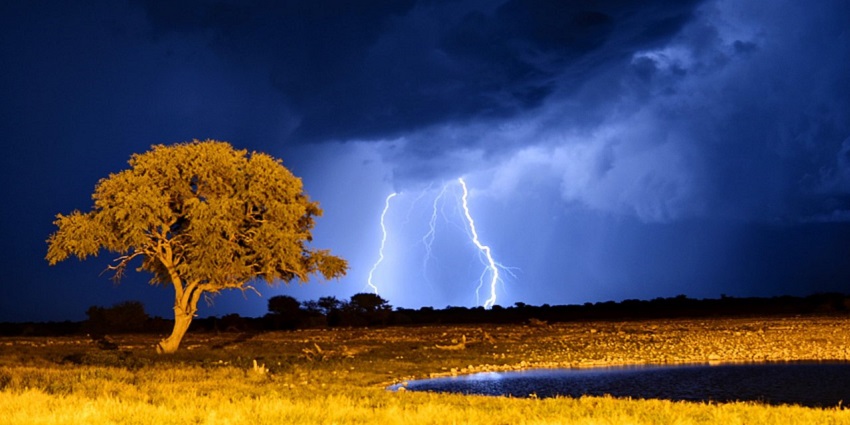
Photo: Sekundemal / Wikimedia Commons / Image For Representation Only
Etosha is situated in northern Namibia, south of the Zambezi, around 415 kilometres north of Windhoek, the capital city. The landscape is dominated by an enormous, glinting salt pan with grasslands and woodlands, which serve as habitats for over 114 mammal species and 340 bird species. Few areas in Namibia offer such a chance for you to admire the natural beauty of the scenic wonder that is Namibia.
Suggested Read: Top 10 National Parks In Namibia
How To Reach Etosha National Park Namibia
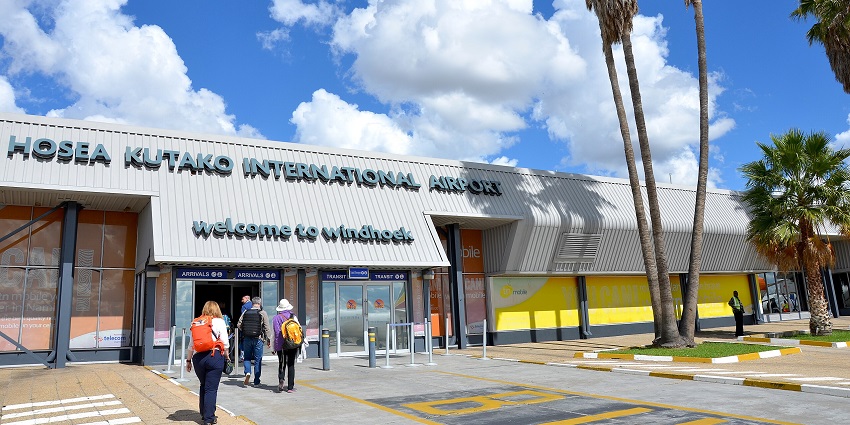
Photo: Olga Ernst / Wikimedia Commons / Image For Representation Only
By Road: The Etosha National Park is about 4-5 hours’ drive by road from Windhoek. Most travellers rent a car as the roads are amazing to drive.
By Air: You must book a flight to Hosea Kutako International Airport and then pick a domestic flight to Ondangwa or Outjo, followed by a drive to your destination.
Things To Do
Here is the list of things that you can do in and around Etosha National Park:
1. Game Drives
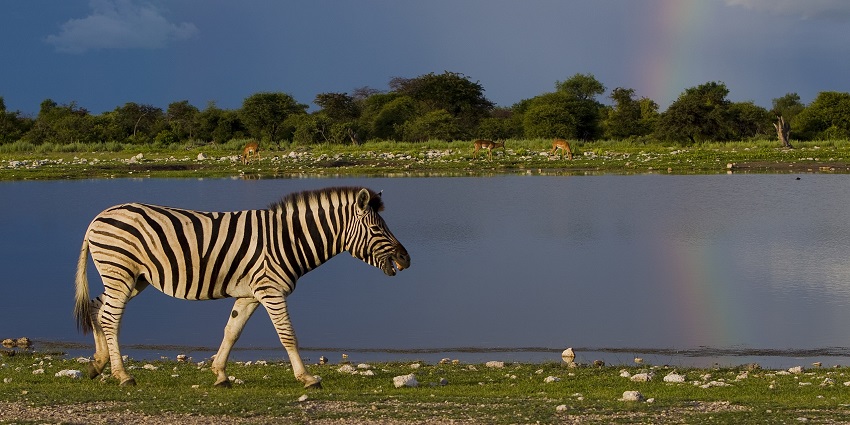
Photo: Yathin S Krishnappa / Wikimedia Commons
Etosha is a wildlife lover’s dream come true. You can spot elephants, lions, leopards, giraffes, and rhinos, as well as the rare black-faced impalas, on guided or self-drive safaris. The morning and evening game drives will treat you to some exciting viewing opportunities and many photographic chances.
Suggested Read: Top Things To Do In South Africa
2. Visit Waterholes
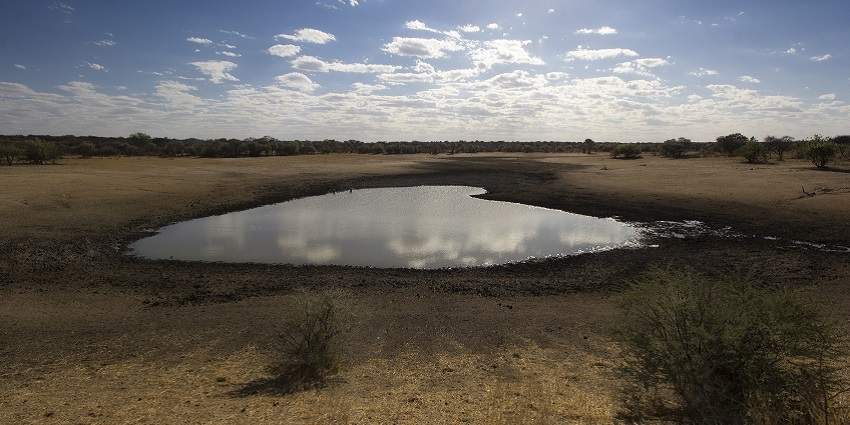
Photo: Buiobuione / Wikimedia Commons
Several waterholes inside the park, such as Okaukuejo, Nebrownii, and Halali, allow you to spot the game. Animals gravitate towards these areas, especially during the dry season, providing a perfect opportunity for predators and prey to engage in exciting encounters while you observe the daily lives of various species.
Top 5 Places To Visit Near Etosha National Park
1. Onguma Game Reserve
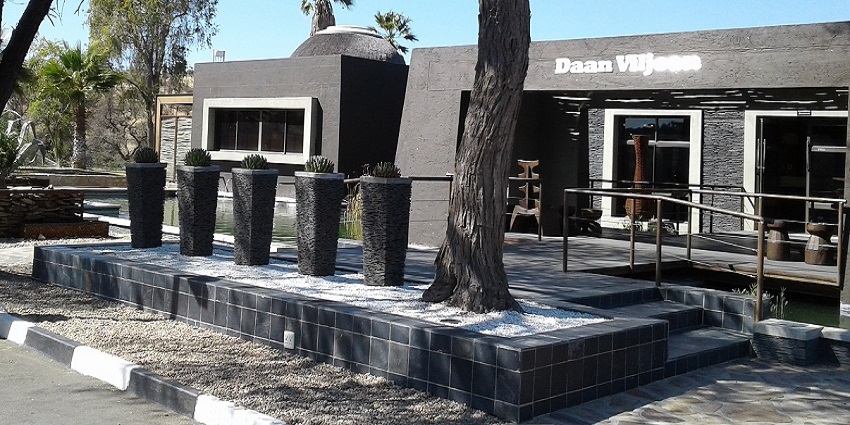
Photo: FlyByNight / Wikimedia Commons
The Onguma Game Reserve lies on the eastern edge of Etosha National Park Namibia and is a wildlife sanctuary over some 34,000 hectares. Incorporating diverse ecosystems of savannah, woodland, and waterholes, this reserve boasts an array of wildlife, from lions and elephants to more than 300 bird species. There are guided safaris, birdwatching, sumptuous lodgings in eco-friendly lodges, and also night game drives to up the ante on this thrilling night safari. Serene and close to Etosha, this makes a great extension of your Namibian safari experience.
Timings: 6 AM – 6 PM
Suggested Read: Top Popular Waterfalls In South Africa For An Exciting Adventure
2. Outjo
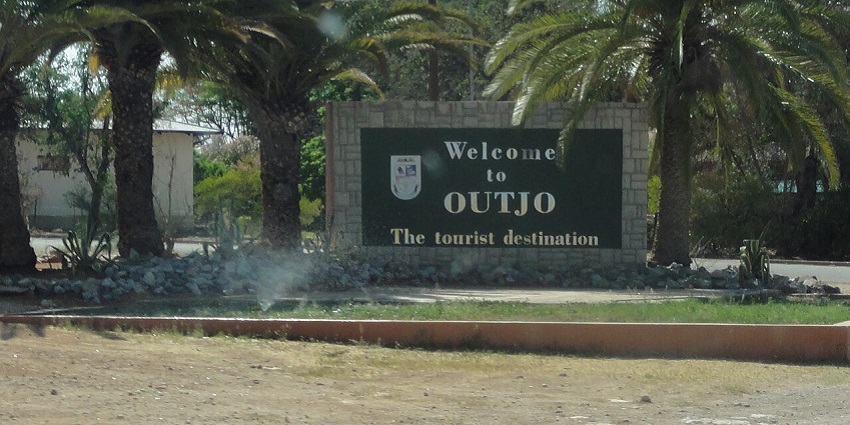
Photo: Wiki.cullin / Wikimedia Commons
A nice little town on the way into Etosha gives you a cultural, historical, and culinary experience. Quaint cafes and bakeries await you in this one-wa unless you don’t mind loitering. Explore the Outjo Museum, showing Namibia’s colonial era, or browse local craft stores for some souvenirs. Friendly folk intermingle here, making it a convenient base for you heading towards Etosha. Try not to miss traditional baked delicacies and some history on your journey.
Entry Fee: No entry fees
Timings: 8 AM – 5 PM
3. Otjikoto Lake
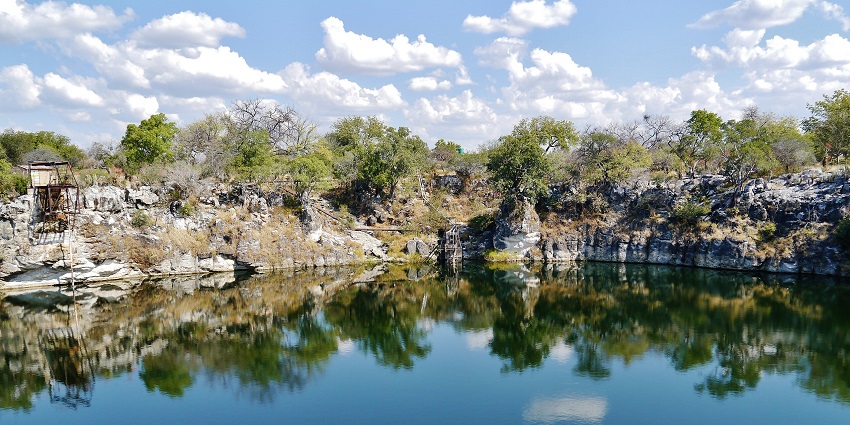
Photo: Zairon / Wikimedia Commons
Otjikoto Lake is a natural lake with a sinkhole, spectacular views, and an amazing history. Situated close to Tsumeb, the lake served as the dumping ground where German artillery was discarded during World War I, some being exhibited in nearby museums. Surrounded by a thick bush, it offers a quiet space ideal for picnics, photography, or bird-watching. Excursions around the lake permit nearby schools to become well-known to history or nature lovers. The guided tours educate one about its unique geological and cultural heritage.
Timings: 8 AM – 5 PM
Suggested Read: Apartheid Museum
4. Tsumeb
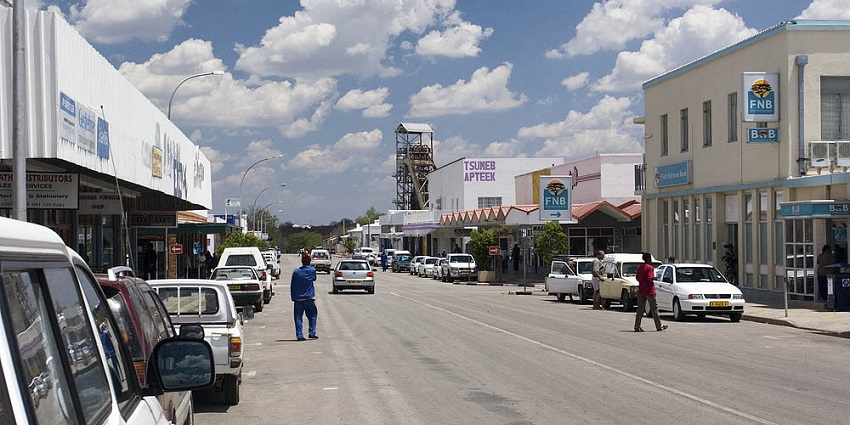
Photo: greg willis / Wikimedia Commons
This place is a town of history and culture and is known as Gateway to the North. The Tsumeb Museum is full of artefacts from its mining history and remnants from World War I recovered from Otjikoto Lake. Other sites in the neighbourhood include the Cultural Village, where you can learn about Namibia’s different ethnic traditions. The town also has several excellent restaurants, craft shops, and comfortable accommodations. With such proximity to Etosha, the visit is an ideal, rewarding stop.
Timings: 8 AM – 5 PM
5. Cheetah Conservation Fund
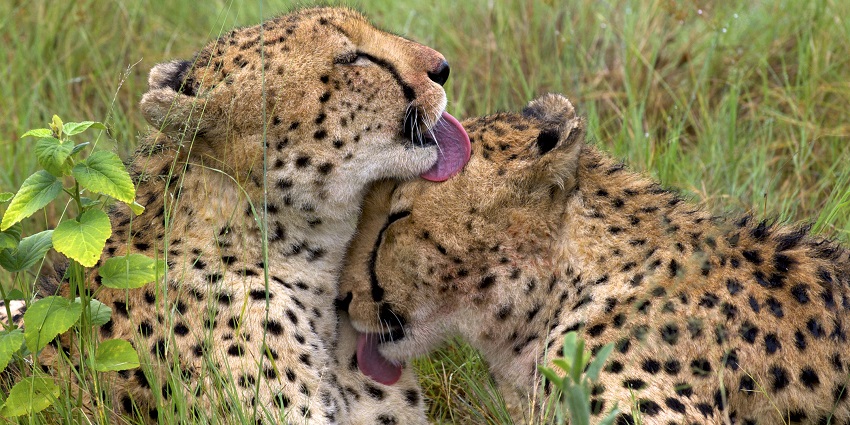
Photo: Arturo de Frias Marques / Wikimedia Commons
Located near Otjiwarongo, the Cheetah Conservation Fund stands at the helm of the conservation industry. The centre offers educational tours of the grounds, providing guided experiences with cheetahs in their natural habitats and the research centre. Learning programs are also available, including feeding demonstrations and cheetah walks. Within the centre, educational exhibits discuss what is threatening the survival of these wonderful creatures and what is being done to save them. The trust’s wildlife conservation practice is what makes it one more reason for an animal lover or an eco-traveller to visit here.
Timings: 8 AM – 5 PM
Suggested Read: Cango Caves
Where To Stay
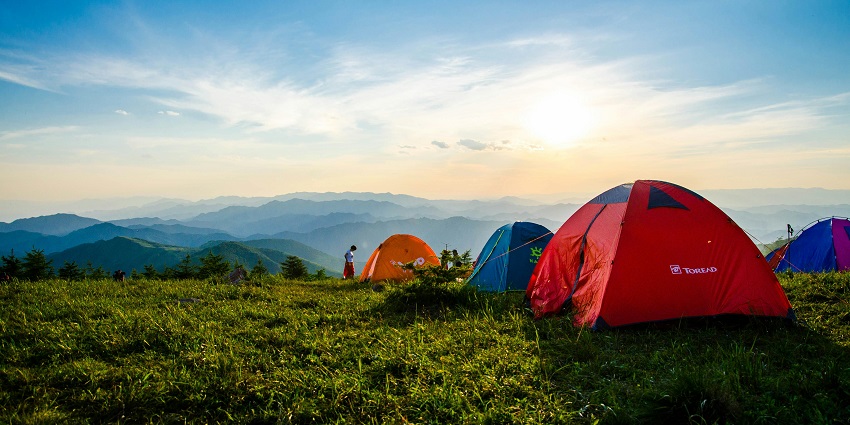
Photo: Xue Guangjian / Pexels / Image From Representation Only
Stay ranges from luxury lodges to budget-friendly campsites in the Etosha National Park. Okaukuejo Rest Camp has a good reputation thanks to its floodlit waterhole, and within it, there are many chalets and good camping grounds. Halali Rest Camp is located in a central place, after which it is the point of exploration for other areas of the park. You will find bungalows and camping at Halali. For a luxurious stay, Onguma Game Reserve, just next door, has exclusive lodges. Namutoni Rest Camp has a fort full of history, and you can also stay in picturesque lodges such as Etosha Safari Lodge, which has dramatic scenery and modern luxuries.
Where To Eat

Photo: Engin Akyurt / Wikimedia Commons / Image For Representation Only
Dining in Etosha National Park centres around rest camp restaurants and nearby lodges. Okaukuejo Rest Camp Restaurant offers hearty meals with local flavours and views of the famous waterhole. Halali Rest Camp Restaurant serves a mixed combination of international and Namibian cuisines and is perfect for an excellent mid-day or evening break. The Namutoni Rest Camp Restaurant has several choices in a charming fort. One can go the luxury route around the nearby lodges Onguma Bush Camp and Mokuti Etosha Lodge, which offer gourmet dining options featuring fresh local produce in grandeur and peace.
Suggested Read: Table Mountain National Park South Africa
Other Factors To Consider
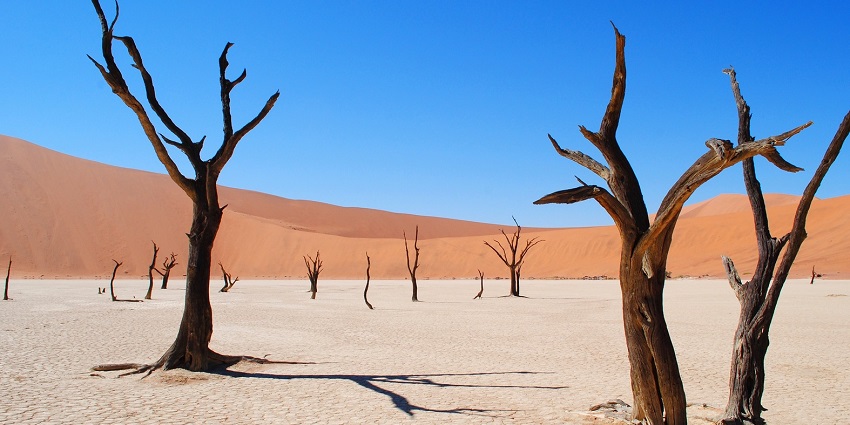
Photo: Anonymous / Pxhere / Image For Representation Only
When planning your visit to Etosha National Park, you must know a few other factors that could enhance your experience. Understanding the park rules and safety regulations to prepare for the unique climate and terrain of Namibia is among the most significant things to consider. Here’s what you need to keep in mind before starting your trip to this remarkable tourist destination.
Average Cost Of The Trip
The average cost of a trip to Etosha National Park in Namibia varies based on preferences. Budget trips can start at $500–$800 per person for a 3-day visit, including park fees, camping, and self-drive options. Mid-range trips may cost $1,200–$1,800 with better accommodations and guided safaris. Luxury experiences can go up to $3,000 or more, offering exclusive lodges and premium services. Costs depend on travel mode, duration, and additional activities, such as wildlife photography tours.
Tips For Travellers
- Make sure you have travel insurance, basic first aid, and malarial precautions, and consult a doctor for anti-malarial advice.
- Parks demand entry fees, though there are differences between the amounts charged to locals and those charged to international tourists. Check the current rates before going on an actual trip.
- The dry season from May to October is the best for wildlife viewing but is also significantly cooler at night. So make sure to pack well.
Etosha National Park Nambia is filled with a wealth of biodiversity and natural beauty. From its classic salt pan to vibrant wildlife, the Etosha experience immerses you throughout the decades. With so much in the vicinity, including attractions, comfortable lodgings, and unique activities and sightseeing opportunities, a trip with TripXL to the park is a destination one can’t fail to include in the itinerary.
Cover Photo: Yathin S Krishnappa / Wikimedia Commons


 WhatsApp
WhatsApp
 Twitter
Twitter









